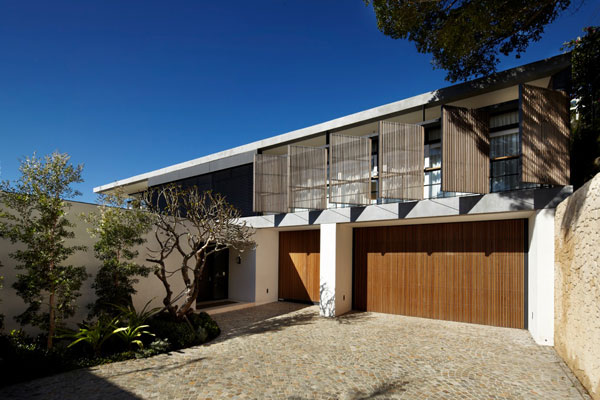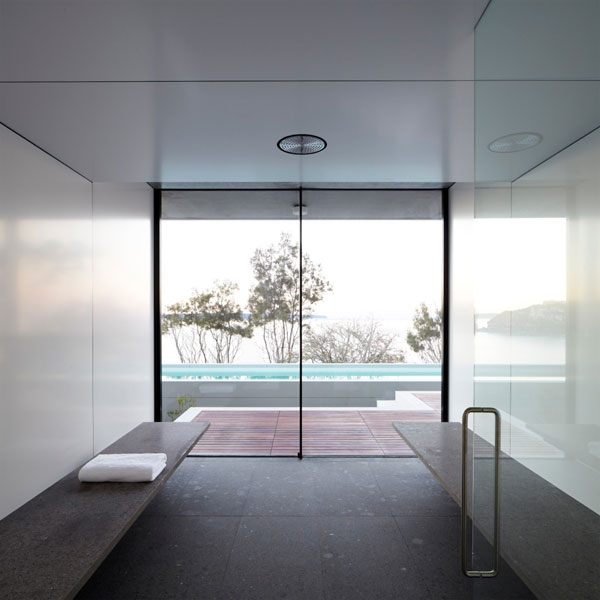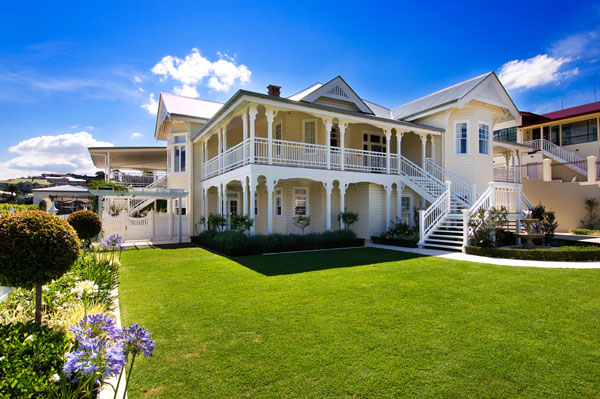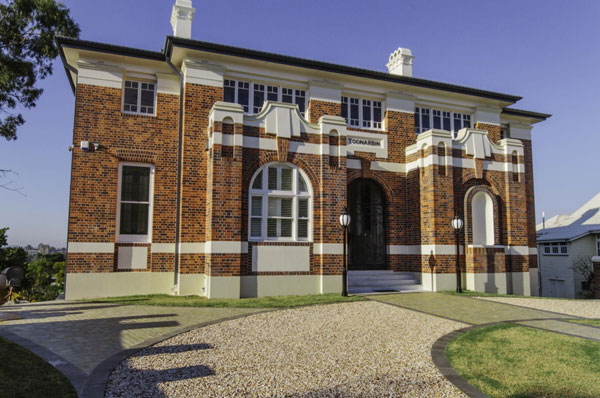
Margins: architecture and profits
Margins: architecture and profits
Share
Lead image: i2c Architects’ work at Uni Hill Bundoora. All images courtesy 12c Architects, Mark Williams Architects and Tobias Partners.
Issue 138 of Architectural Review Asia Pacific explores the theme of margins. In Michael Holt’s editorial introduction he says: “Architects must take ownership of the economic and political forces impacting on the practice, [to] be more in tune and establish new ways of procuring and producing architecture”.
Though perhaps not intended for such literal interpretation, the economic and political ramifications of profit in practice can’t be ignored. In fact, it’s arguable the practice of architecture can’t survive without profit.
In many ways then, profit is the defining margin for architecture as a practice. So what does profit mean to Australian architects? How is profit – margin – brought to the centre of the architectural profession without disrupting the intent of the design process? How does profit in itself protect the integrity of architecture and design?
It’s a widely held view that making a profit is necessary for a business to survive. This seems like an obvious statement, yet architects, traditionally known for their staunchly creative motivations, may happily put design, art and legacy ahead of unpleasantries such as profit. While it’s true that few architects choose the profession for the pursuit of financial riches, a successful practice is one that recognises and protects the need for profitability, to ensure the integrity of the design process.
Mark Williams, managing director of Mark Williams Architects and president of the Queensland and Northern Territory branch of the Association of Consulting Architects (ACA), says the practice of architecture needs to be a business first.
“Why would I continue in a business that is not profitable? After all, if I just loved doing design work I could work for someone else who could then worry about how to pay the bills,” Williams says.
“As architects we do embrace art, but we are not predominantly artists. It can be a trap; we appreciate good design, work hard to try and bring all the stakeholders along on the journey and, for some, love the acknowledgement from peers and the community. I would argue that winning awards is nice, but you can’t keep trading off past glories.”
Tobias Partners’ managing principal John Barker says putting profitability second to the pursuit of design, legacy or awards really depends on the sort of model a practice follows.
“I cannot conceive of a single, well managed progressive design practice – one that views itself as being a top tier provider of architectural services – that would put the winning of awards ahead of being profitable,” Barker says.
“Being profitable enhances the opportunities and the potential of any design practice to produce award winning work.”
i2C Architects senior associate/manager NSW Anthony Palmas suggests that as businesses need to make money, margin (profit) is integral to the business of architecture.
“We measure profit at a detailed level, maybe more so than other practices,” Palmas says.
“Doing this has allowed us to make better business decisions as we can place individual projects within the larger context. We have certainty in how best to service each project right now, and confidence in forecasting where it’s heading. That’s the power practice management software gives us.”

i2c Architects, Fremantle Commercial Development.
The Importance of Margin in Practice
Margins in business are important for more than monetary reasons. They create buffers as activity and climate peaks and dips, they provide investment funding for growth, and they provide shareholders a return on risk.
John Barker says the importance of profit in practice depends on the definition.
“Costs in general, the assessed risks versus the potential rewards, the expertise available and time allocated – and the more holistic discussion around appropriate fees for the IP generated by the practice – are all central issues when it comes to profit discussions,” he says.
“Too often profit discussions are seen as something to avoid at all costs, internally and externally. Is profit viewed as simply to provide a return on the practice assets? Should profit not be considered in the broader context of all practice stakeholders (owners, employees, clients, the general public)?”
Anthony Palmas says it’s up to architects to improve their systems and drive progress.
“Good design takes time,” Palmas says.
“The question is whether the industry is prepared to pay for the extra time.
“It’s a competitive market out there… if we had not started measuring profit at a detailed level over the past five years, we would have felt the pressure now and would have had to make other compromises on the way we work. Design and service is never negotiable.”
This is echoed by John Barker who suggests profit should be viewed in the broader context, such as allowing adequate reinvestment in the technology, practice assets and the human capital of the design practice.
“Profit allows the practice unfettered freedom to provide the most effective and viable services to each client, using available tools and well resolved systems and initiatives,” he says.
“Each practice needs to define what it believes are reasonable fees to apply to each project based on its costs and delivery model. This can often be viewed as a somewhat daunting task to undertake, without some sort of specialised financial modelling or software.”
Mark Williams says profit provides stability and confidence for all stakeholders in the business and projects.
“Profit means we can reinvest in our businesses – with new technology, research, continuing professional development – reward our staff and have the time to provide well considered and documented designs for our clients,” he says.
“2013 and 2014 are the toughest two years I’ve experienced since starting out as a single practitioner 28 years ago… Without a healthy cash flow and reasonable profit margins you can quickly find yourself broke. Having a profitable business provides security for staff and clients.”
Profiting From Technology
Mark Williams Architects, Tobias Partners and i2C Architects all use sophisticated practice management software – Total Synergy – to analyse and manage profitability across the business and projects.
i2C’s Anthony Palmas says what started as an exercise in gaining detailed awareness of the company’s profit has had flow-on benefits.
“Our practice management software has been invaluable in helping us pinpoint wins and losses to continue to get even better at what we do,” he says.
“We have more resources, latitude and freedom to perfect our current offering, grow into new sectors, and research and pursue the clients and projects that inspire us. All while maintaining an internal culture that nurtures our team professionally and personally.”
Tobias Partners’ John Barker says practices need to understand the business model they have chosen for the management of the practice and delivery of design services.
“It’s important to understand the drivers and KPIs associated with managing and measuring performance, whether they be utilisation rates, actual costs and mark up, practice operational budgets, or other drivers and KPIs,” he says.
Viewing the capability for measuring profitability from the software developer’s point of view, Total Synergy CEO Scott Osborne says in the early stages of developing practice management software for architects and engineers 15 years ago, the analysis of data within the system demonstrated the importance of profitability beyond just a single business unit.
“We quickly realised it was easy to analyse profitability for projects, clients and staff meaning the practice could make better decisions in future, including selecting the best clients and projects for the best outcome, both in margin for the practice and services for the client,” Osborne says.
“It answered questions about whether a client was profitable, despite perhaps bringing regular work to the firm. We’ve heard of several cases where, once analysed, a regular client was often a distraction and hindrance and not profitable at all.”
Another benefit from data analysis was in evaluating lifetime value in projects and clients.
“We found with architecture practices, and engineering firms in particular, they could choose to pitch a loss leader project knowing they’d make profit over the lifetime of the project.
“The historical analysis gives that kind of insight in how to achieve margin over time.”
Profit Meets Architecture
In his role as branch president of the ACA, Mark Williams is regularly involved in the discussion of ‘the business of architecture’, a conversation largely driven by the ACA in the Australian industry. His own views on how the industry can do better business are threefold: improve communication techniques, improve ways to market services, and improve financial education.
“Educating the public, clients, governments and other stakeholders on the value of good architecture will help increase the value of architectural services and, in turn, improve the business of architecture,” he says.
“In many ways the Australian public are aware of design from watching the plethora of reality shows, but they haven’t really been exposed to the process and the value that is added through good design.
“I think small architecture businesses also need to develop a better understanding of what it costs to provide architectural services, along with financial education to help with understanding profit and loss reports, balance sheets, setting budgets, cash flow forecasting and other critical business functions.”
John Barker says no building professional should be embarrassed for making a profit.
“Nor should they be concerned about discussing the concept in broad terms with potential clients who may be seeking to drive the cost of professional fees lower,” he says.
“If a design practice is not making a profit, there is a very good chance it may be actually making a loss.”
For Anthony Palmas and i2C, profitability is a business goal that supports the firm’s core architectural goals.
“Economic certainty gives us greater confidence to push harder on our clients to realise the designs as we believe they should be,” he says.
“Service and client satisfaction are vital to a successful project, but we also think there are human and environmental concerns that are equally important.
“Achieving and surpassing our architectural and human goals is ultimately why we’re here… Being financially successful enables us to succeed in those areas.”
An article by Jamie Millar of Total Synergy.





















